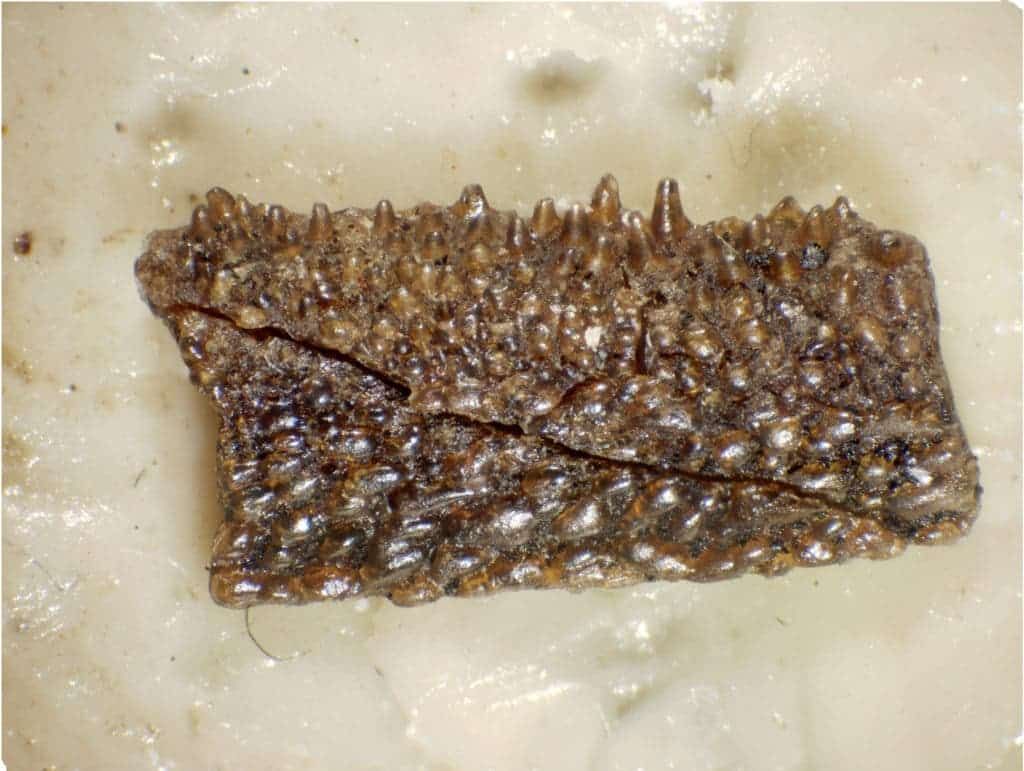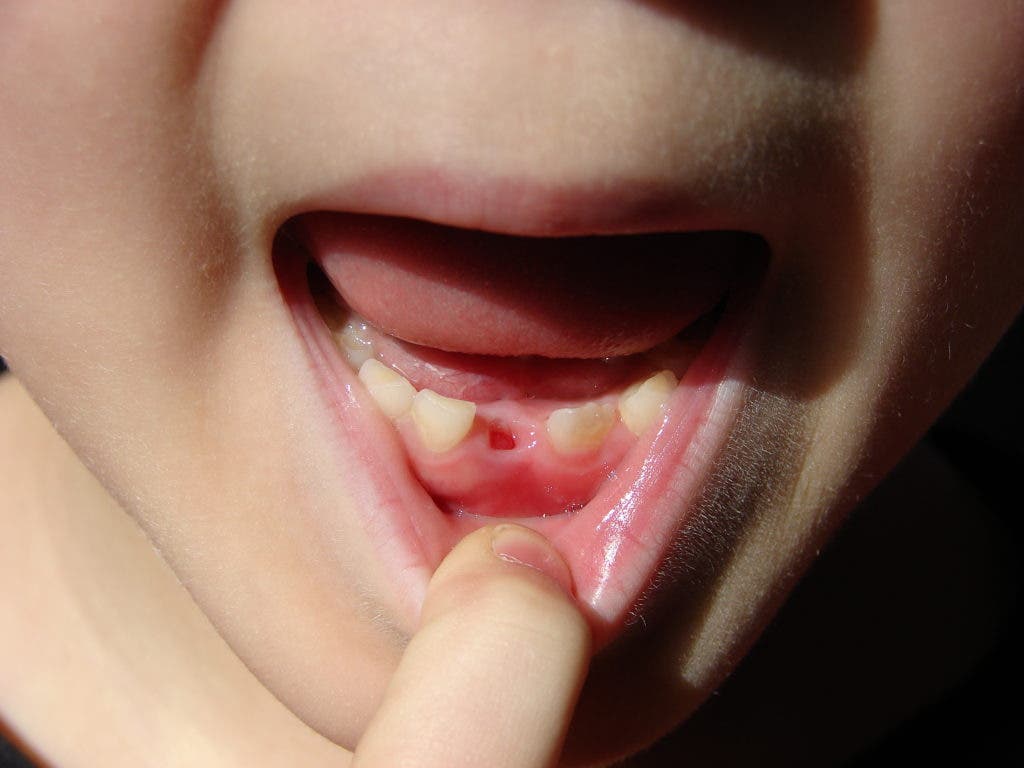As unlikely as it seems, Swedish researchers applying x-ray tomography to a tiny jawbone of a 424 million-year-old fossil may have solved a mystery about baby teeth.
A tale of baby teeth…
Do you remember dropping your milk teeth? There’s a lot of wiggling and some pain, and after that, they just drop. But instead of seeing a full tooth, you only see the enamel-covered crown. So where has the root gone? Well, you probably don’t know it when you’re that young but that’s just your milk tooth, your baby tooth – your “real” teeth will grow soon and replace them. But why does this happen? Why do you grow some baby teeth which are then replaced with other teeth instead of growing the good teeth from the start?
Milk teeth start developing during the embryo phase of pregnancy. The eruption of these teeth starts at the age of six months and continues until twenty-five to thirty-three months of age during the primary dentition period. These teeth play a key role maintaining the arch length within the jaw. But most importantly, they preserve space for our adult teeth to grow. During the earliest stages of our lives, there simply isn’t enough room in the mouth for our adult teeth, so the baby teeth simply ensure there’s enough space for them to develop. While most reptiles and marine vertebrates have similar teeth, mammals (including humans) have highly specialized teeth, very different one from another. These teeth need to fit together properly to work well so this process is extremely important.
… and ancient fish
By now, you’re probably wondering where the fish comes into all of this. Well, having two sets of teeth is not that common in nature, but tooth shedding is. Teeth are subjected to a lot of wear and tear, so they’re often shed and replaced by new ones. This process evolved two times, independently. First, in sharks and in rays, where the fibres that anchor the tooth to the skin of the jaw dissolve and the whole tooth simply falls out. Meanwhile, in bony fish and land vertebrates, the developing tooth becomes attached directly to the jaw bone by a special tissue known as “bone of attachment” and when the tooth falls this attachment is severed. This is the origin of our baby teeth, which exhibit a similar process. But when did this process evolve?

In a paper published in Nature, a team of researchers from Uppsala University and the ESRF in France apply synchrotron x-ray tomography to a tiny jawbone of a 424 million year old fossil fish in order to illuminate the origin of this strange system of tooth replacement. Image credits: Henning Blom et al, 2016.
Surprisingly, the teeth of the earliest jawed vertebrates were fixed to the jaw bones and could not be shed. So somewhere along the line, this trait started to develop and differentiate, but where? This is where the ancient fish enters the scene.
The 424 million-year-old fossil fish Andreolepis from Gotland in Sweden is close to the common ancestor of all living bony fish and land vertebrates. Its jaw is really tiny (less than a centimetre) but beautifully maintains the internal microstructure of the bone. Without damaging the fossil at all, paleontologists were able to make tomographic scans of the jaw, virtually dissecting the fossil in 3D without even touching it. Donglei Chen, first author of the study describes the painstaking process and the results they obtained:
“Every time a tooth was shed, the resorption process created a hollow where it had been attached. When the succeeding replacement tooth was cemented in place by bone of attachment, the old resorption surface remained as a faint buried scar within the bone tissue. I found up to four of these buried resorption surfaces under each tooth, stacked on top of each other like plates in a cupboard. This shows that the teeth were replaced again and again during the life of the fish,” explains Donglei Chen.
This is the first time we can observe the basal resorption tooth and it’s simply stunning how much info we can draw from this.
“The amount of biological information we get from the scans is simply astonishing. We can follow the process of growth and resorption right down to cellular level, almost like in a living animal. As we apply this technique to more early vertebrates, we will come to understand their life processes much better – and no doubt we will be in for some major surprises,” says Per Ahlberg, one of the leaders of the project.
So remember, when a kid asks you why he has baby teeth – just tell him it’s because a 400-million-year-old fish evolved them.










